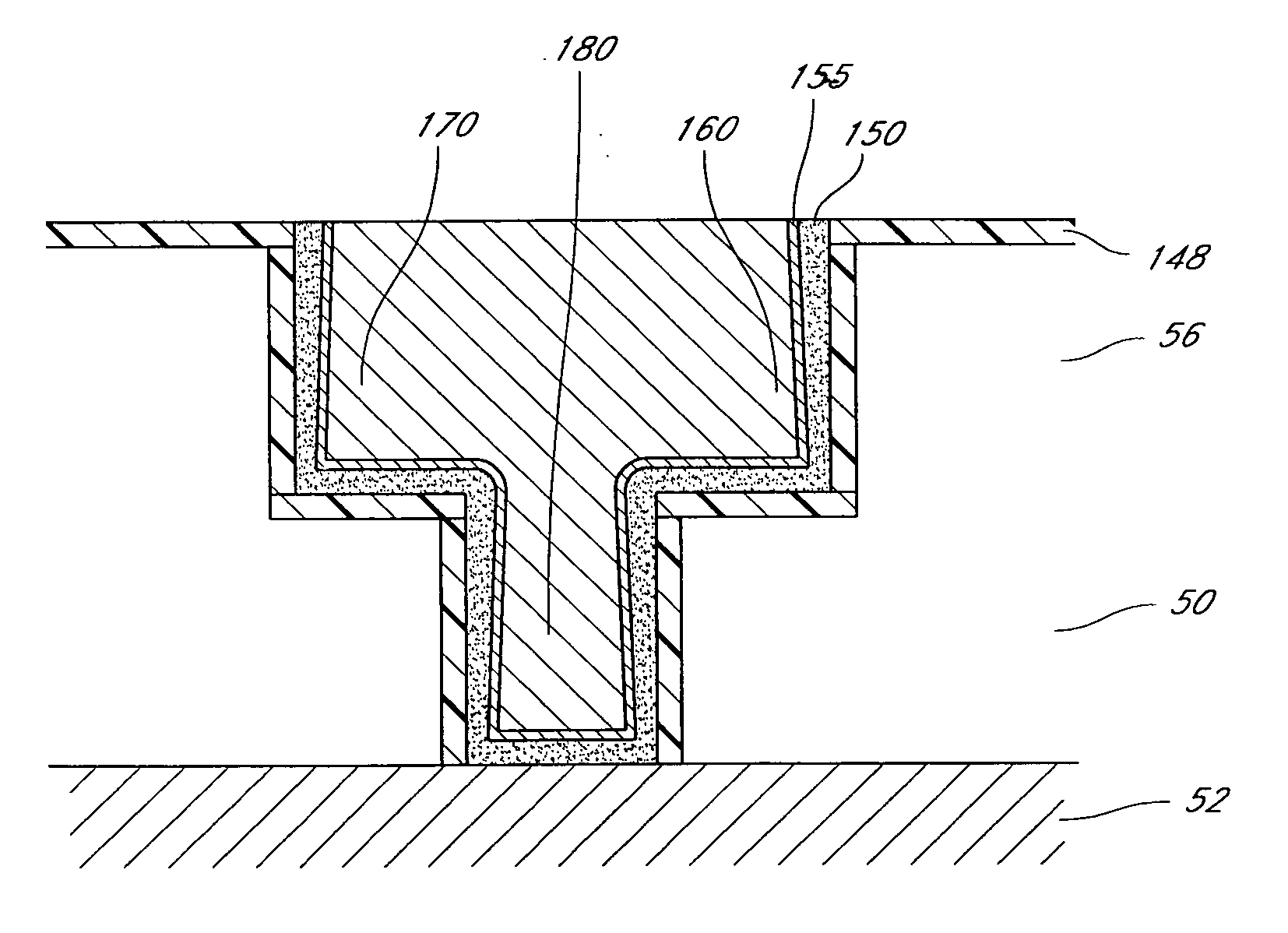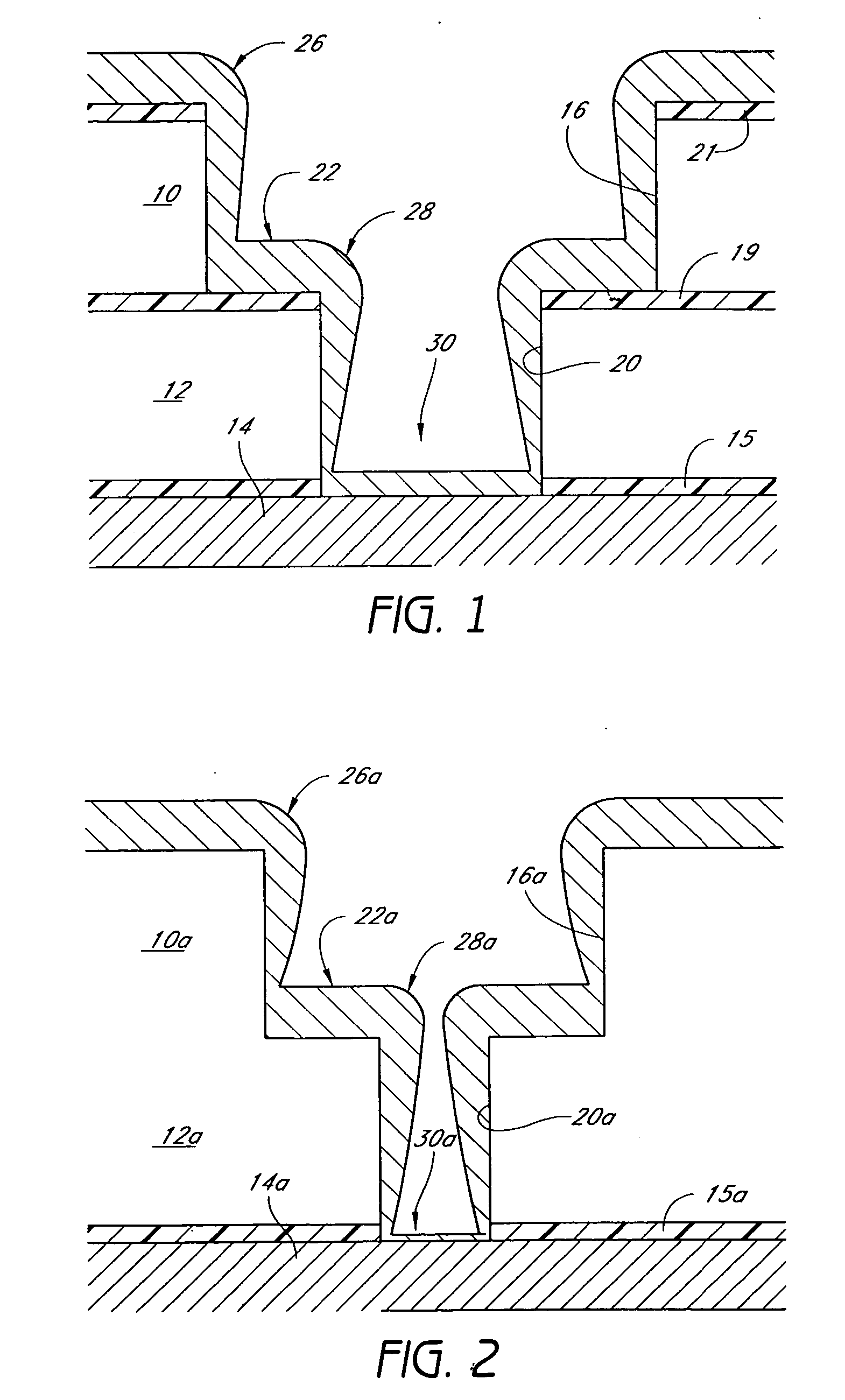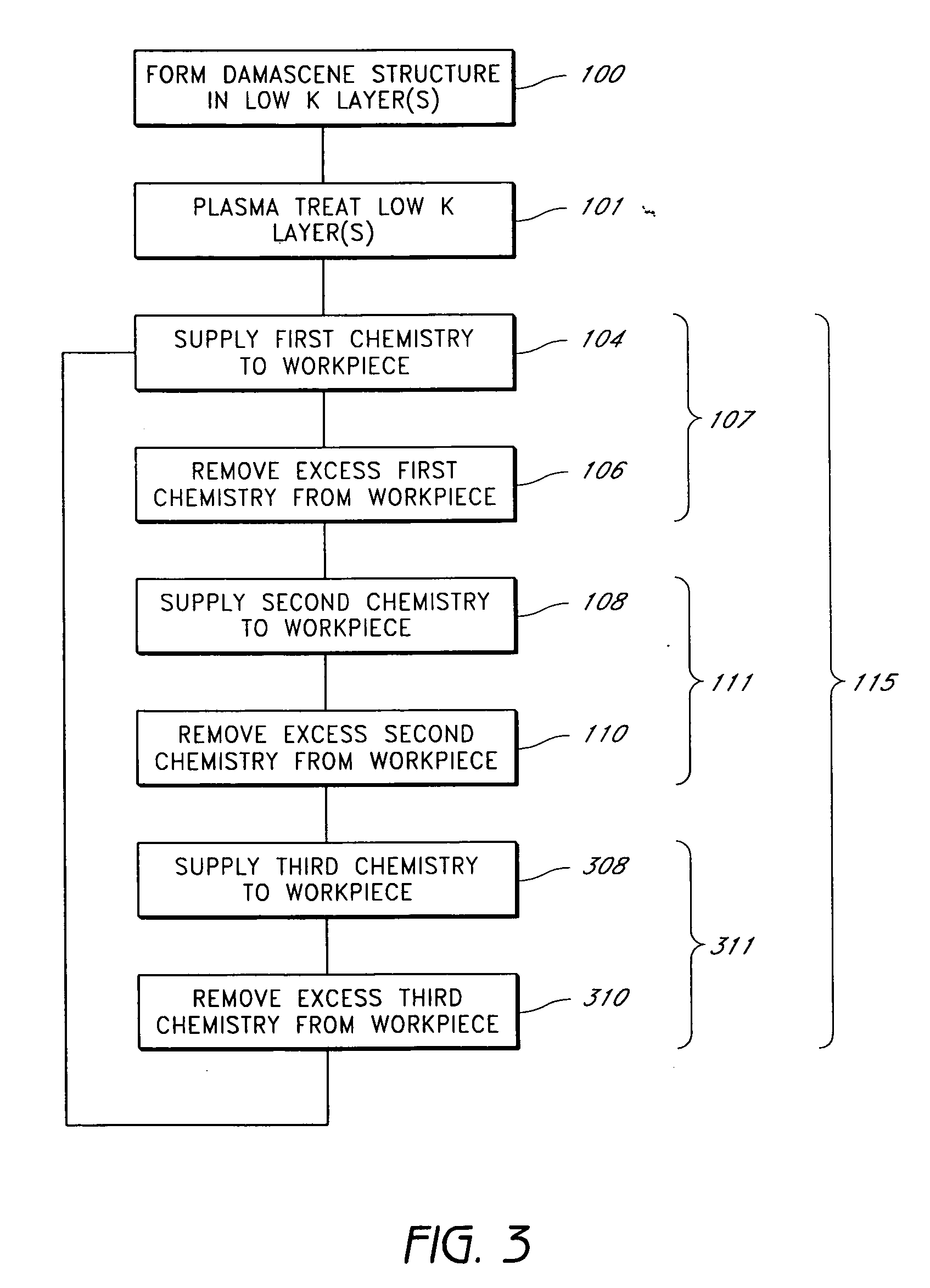Plasma pre-treating surfaces for atomic layer deposition
a technology of atomic layer and surface treatment, which is applied in the direction of vacuum evaporation coating, semiconductor/solid-state device details, coatings, etc., can solve the problems of unfavorable short circuit between devices and lines, difficulty in completely filling deep, narrow openings with conductive materials, and difficulty in conformal deposition of liners b>22/b>, and achieve the effect of improving the barrier property and the barrier property of the barrier layer associated
- Summary
- Abstract
- Description
- Claims
- Application Information
AI Technical Summary
Benefits of technology
Problems solved by technology
Method used
Image
Examples
examples
[0137] The description below provide exemplary process recipes for forming metal nitride layers suitable for barrier applications in dual damascene metallization schemes for integrated processing. The process recipes represents one cycle in a single-wafer process module. In particular, the illustrated parameters are developed for use in the single-wafer ALD module commercially available under the trade name Pulsar 3000™ from ASM America, Inc., Phoenix Ariz.
[0138] Note that the parameters in the tables below are exemplary only. Each process phase is desirably arranged to saturate the via and trench surfaces, and more particularly to saturate the plasma treated surface of the insulating layer. Purge steps are arranged to remove reactants between reactive phases from the substrate. The examples herein can be conducted upon planar, unpatterned wafer surfaces in a POLYGON™ cluster tool available from ASM International, N.V. of Bilthoven, the Netherlands. Similar ALD processes have been ...
PUM
| Property | Measurement | Unit |
|---|---|---|
| Temperature | aaaaa | aaaaa |
| Fraction | aaaaa | aaaaa |
| Fraction | aaaaa | aaaaa |
Abstract
Description
Claims
Application Information
 Login to View More
Login to View More - R&D
- Intellectual Property
- Life Sciences
- Materials
- Tech Scout
- Unparalleled Data Quality
- Higher Quality Content
- 60% Fewer Hallucinations
Browse by: Latest US Patents, China's latest patents, Technical Efficacy Thesaurus, Application Domain, Technology Topic, Popular Technical Reports.
© 2025 PatSnap. All rights reserved.Legal|Privacy policy|Modern Slavery Act Transparency Statement|Sitemap|About US| Contact US: help@patsnap.com



